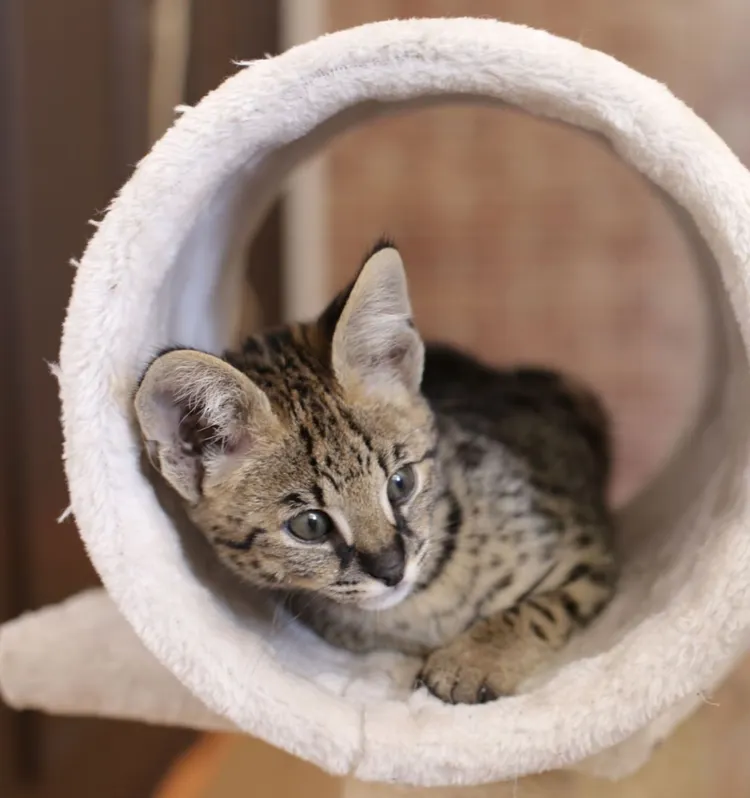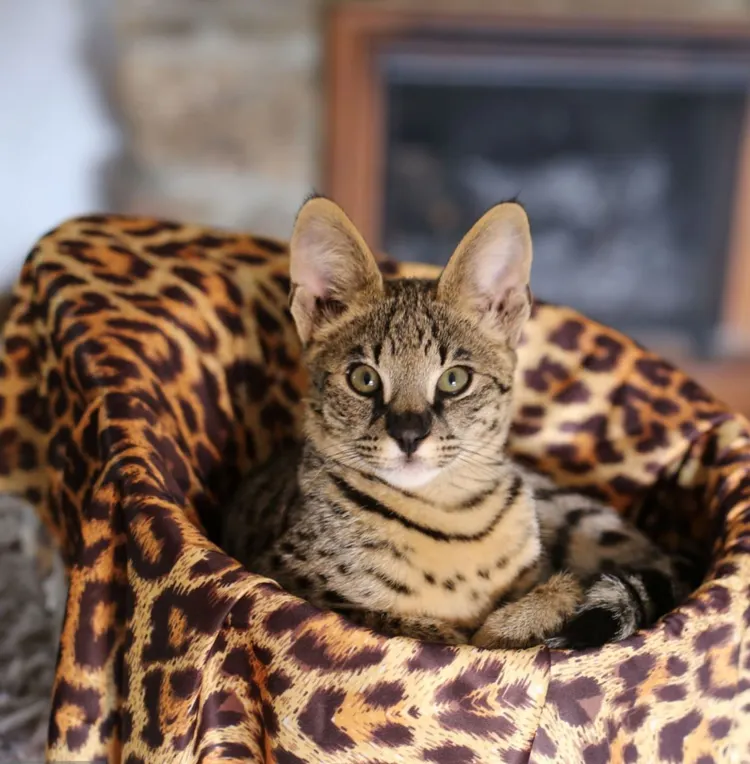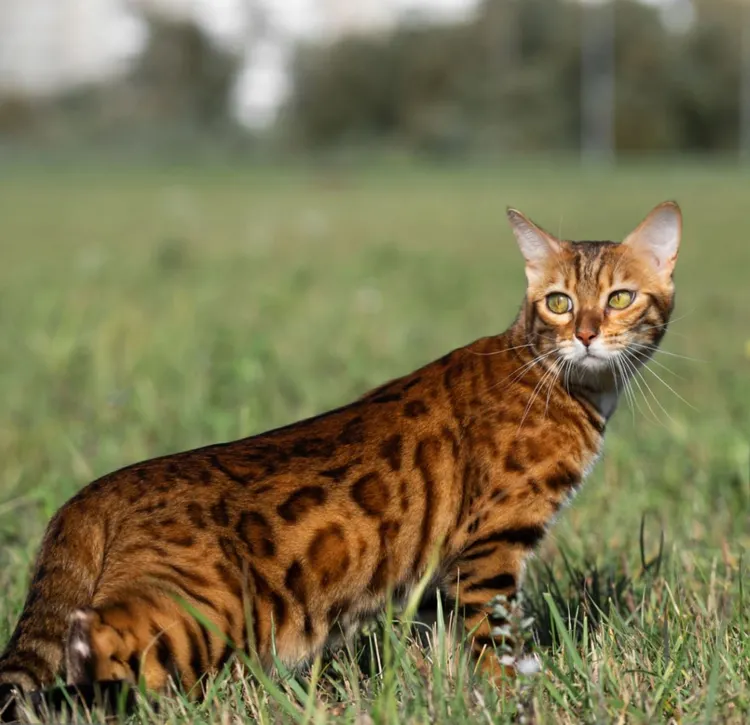Are you looking for a cat that’s more than just a cute fluffball, but a captivating mix of wild and domestic? Enter the F1 Bengal Cat—the exotic hybrid that’s taken the feline world by storm. This majestic breed, a cross between an Asian Leopard Cat (ALC) and a domestic cat, has the perfect balance of wild beauty and affectionate pet qualities.
In this post, we’ll dive into everything you need to know about the F1 Bengal Cat, including its specific characteristics, adoption tips, and how to care for it in an eco-friendly way.
What Is an F1 Bengal Cat?
Let’s start with the basics: what exactly is an F1 Bengal Cat?
- F1 refers to the first generation of a Bengal cat, meaning it’s the direct offspring of an Asian Leopard Cat and a domestic cat.
- This makes the F1 Bengal the closest relative to a wild cat, resulting in certain physical and behavioral traits that are more “wild” than later generations (F2, F3, etc.).
Unique Physical Characteristics
The F1 Bengal cat boasts a striking appearance that sets it apart from other cat breeds:
- Wild-like coat patterns: These cats often have a rosette or marbled coat that resembles their wild ancestors. The colors range from shades of brown, gold, and silver to the more rare “snow” variation.
- Sleek, muscular body: F1 Bengals are lean and muscular, making them agile and athletic.
- Large ears and a small head: Their physical traits, such as prominent, rounded ears and a smaller head compared to their body size, give them an exotic look.
Behavioral Traits of F1 Bengals
F1 Bengals also possess behaviors that stem from their wild ancestors:
- Active and energetic: These cats love to climb, jump, and explore. They’re not your typical lap cat but will play and interact with you for hours.
- Highly intelligent: Bengals are known for their problem-solving abilities. Be prepared for them to figure out how to open doors or play fetch!
- Curiosity and boldness: F1 Bengals often exhibit a bolder personality than most domestic cats, which can be both fascinating and challenging for owners.
Are F1 Bengal Cats Right for You?
Adopting an F1 Bengal cat comes with its own set of responsibilities and challenges. Here’s what you should know before bringing one home:
The Pros of Adopting an F1 Bengal
- Exotic beauty: Let’s face it—the allure of having a cat that looks like it stepped straight out of the jungle is hard to resist.
- Loyal and engaging: F1 Bengals form close bonds with their owners. They can be incredibly affectionate, and you’ll never feel lonely with one of these cats by your side.
- Great with active households: If you lead a busy, energetic lifestyle, an F1 Bengal can match your pace. They thrive in homes where they have plenty of stimulation and space to explore.
The Challenges of Owning an F1 Bengal
- High-energy demands: These cats need regular exercise and mental stimulation. A bored Bengal can become destructive.
- Wild temperament: Their wild ancestry means they may be more independent and difficult to train than your average house cat. Be prepared for a more “wild” side compared to F3 or later-generation Bengals.
- Diet requirements: F1 Bengals may have dietary preferences closer to those of a wild cat. High-protein, raw or grain-free diets are recommended.

Eco-Friendly Tips for Raising an F1 Bengal
Since you’re considering adopting an F1 Bengal, why not also think about how you can care for them sustainably? Here are some eco-friendly tips to make your pet ownership more planet-conscious:
1. Choose Sustainable Toys and Furniture
With their high energy levels, F1 Bengals need plenty of toys and scratching posts. Opt for products made from recycled materials, natural fibers, or sustainably sourced wood. Many companies now offer cat trees and toys that are eco-friendly and biodegradable.
- Bamboo and hemp toys are durable and natural options.
- Recycled cardboard scratching posts are a favorite for both cats and the environment.
2. Go for Natural and Organic Foods
An eco-friendly diet can benefit both your Bengal and the planet. Look for organic, ethically sourced raw food or natural cat food brands that minimize environmental impact. Avoid food brands that rely heavily on factory farming or unsustainable fishing practices.
- Consider preparing homemade raw food with locally sourced ingredients if your F1 Bengal thrives on a raw diet.
- Choose brands that focus on sustainability, such as those using sustainable fishing methods or grain-free, eco-friendly packaging.
3. Use Eco-Friendly Litter
Opt for biodegradable cat litter made from natural materials like wood chips, corn, or recycled paper. These types of litter break down naturally and won’t sit in a landfill for years like traditional clay-based litters.
- Corn-based or wood pellet litters are both highly absorbent and planet-friendly.
- Some brands also offer compostable litter, allowing you to dispose of it sustainably.
4. Adopt, Don’t Shop (If Possible)
While it can be tempting to purchase a purebred F1 Bengal from a breeder, consider the environmental impact of breeding practices. If possible, seek out rescue organizations that specialize in Bengals. This approach helps reduce the number of animals in shelters and supports a more sustainable model of pet ownership.
5. Limit Overbreeding and Promote Ethical Breeding
If you choose to buy from a breeder, ensure they follow ethical, eco-friendly practices. Ethical breeders will focus on quality over quantity, reducing the risk of health issues and unnecessary environmental strain from overbreeding.
- Ensure the breeder adheres to proper standards, such as providing ample space and enrichment for their breeding cats, and using eco-conscious resources where possible.

Advice for Adopting an F1 Bengal
Adopting an F1 Bengal can be a thrilling experience, but it’s not for everyone. Before you take the plunge, consider these tips to ensure a smooth transition:
- Prepare Your Home: F1 Bengals need plenty of space to roam and explore. Create vertical spaces like shelves or cat trees to keep them entertained.
- Mental Stimulation: With their high intelligence, F1 Bengals need puzzle toys and regular mental challenges to stay engaged. You can DIY some toys from recyclable materials if you’re feeling crafty!
- Dietary Needs: Feed them a high-protein, high-quality diet that aligns with their wild roots. Raw food is often recommended, but consult your vet to ensure it’s safe for your cat.
- Training and Socialization: Start early with training and socializing your Bengal. Although they have a wild side, regular training and positive reinforcement can help them become well-behaved members of your household.
Conclusion
The F1 Bengal cat is a striking and unique breed, perfect for pet owners looking for an exotic, active, and engaging companion. While they come with their challenges, such as high energy and occasional wild behavior, their beauty, intelligence, and loyalty make them worth the effort. Plus, by raising your Bengal in an eco-friendly way, you’ll contribute to a more sustainable future while giving your cat the best care possible.



